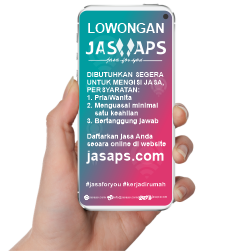Drug conjugation is a crucial method used in pharmaceutical research and development to enhance the pharmacokinetic and pharmacodynamic properties of a drug. By attaching various molecules to the drug (antibody conjugation, PEGylation, oligonucleotide bioconjugation, etc.), researchers can improve its solubility, stability, targeting ability, and overall therapeutic efficacy. There are several drug conjugation methods that have been developed and utilized in the pharmaceutical industry, each with its own advantages and limitations.
One common method of drug conjugation is through the use of antibodies or antibody fragments. Antibodies are highly specific proteins that can recognize and bind to target molecules with high affinity. By conjugating a drug molecule to an antibody, researchers can create a targeted drug delivery system that can deliver the drug directly to the site of action, reducing side effects and increasing therapeutic efficacy. Antibody-drug conjugates (ADCs) have been successfully used in cancer therapy, where the antibody targets cancer cells, delivering the drug specifically to the tumor while sparing healthy cells.
Another method of drug conjugation involves the use of polymers. Polymers can be used to increase the solubility and stability of a drug, as well as to modify its release profile. By conjugating a drug molecule to a polymer, researchers can control the rate of drug release, ensuring a sustained and prolonged therapeutic effect. Polymers such as polyethylene glycol (PEG) have been widely used in drug conjugation to improve the pharmacokinetic properties of drugs, increasing their circulation time in the body and reducing their clearance rate.
Liposomes are another popular drug conjugation method that involves encapsulating drug molecules within lipid bilayers. Liposomes can improve the solubility and stability of a drug, as well as protect it from degradation. By conjugating a drug molecule to a liposome, researchers can enhance its bioavailability and targeting ability. Liposomal drug delivery systems have been used in a variety of therapeutic areas, including cancer therapy, where they can improve the distribution of drugs to tumor tissues and reduce systemic toxicity.
In recent years, nanoparticles have emerged as a promising drug conjugation method. Nanoparticles are small particles with a size range of 1-100 nanometers, which can be used to deliver drugs to specific tissues or cells. By conjugating a drug molecule to a nanoparticle, researchers can improve its stability, targeting ability, and cellular uptake. Nanoparticle-based drug delivery systems have been investigated for a range of applications, including cancer therapy, where they can enhance the accumulation of drugs in tumor tissues and improve their therapeutic efficacy.
Despite the advantages of drug conjugation methods, there are some challenges and limitations that researchers must consider. For example, the conjugation process can affect the potency and stability of the drug, leading to a decrease in efficacy. In addition, the immune response to the conjugated molecule can impact its pharmacokinetic properties and therapeutic effect. Furthermore, the choice of conjugation method and the type of molecule used for conjugation can affect the overall safety and toxicity profile of the drug.
In conclusion, drug conjugation methods play a critical role in pharmaceutical research and development, offering a versatile and effective approach to enhance the pharmacokinetic and pharmacodynamic properties of drugs. By utilizing various conjugation methods, researchers can improve the solubility, stability, targeting ability, and overall therapeutic efficacy of drugs, leading to the development of novel and innovative drug delivery systems. Despite the challenges and limitations associated with drug conjugation, ongoing research in this field continues to advance our understanding of drug delivery and improve patient outcomes.





 rexpos
rexpos  malsa
malsa  report
report




 Alex Brown (@alexbrown)
Alex Brown (@alexbrown) Dark Mode Fitur Baru Posgar
Dark Mode Fitur Baru Posgar Pertolongan Pertama pada Korban Keracunan
Pertolongan Pertama pada Korban Keracunan 8 Tips pertolongan pertama pada orang pingsan
8 Tips pertolongan pertama pada orang pingsan
 expos
expos  order
order 




